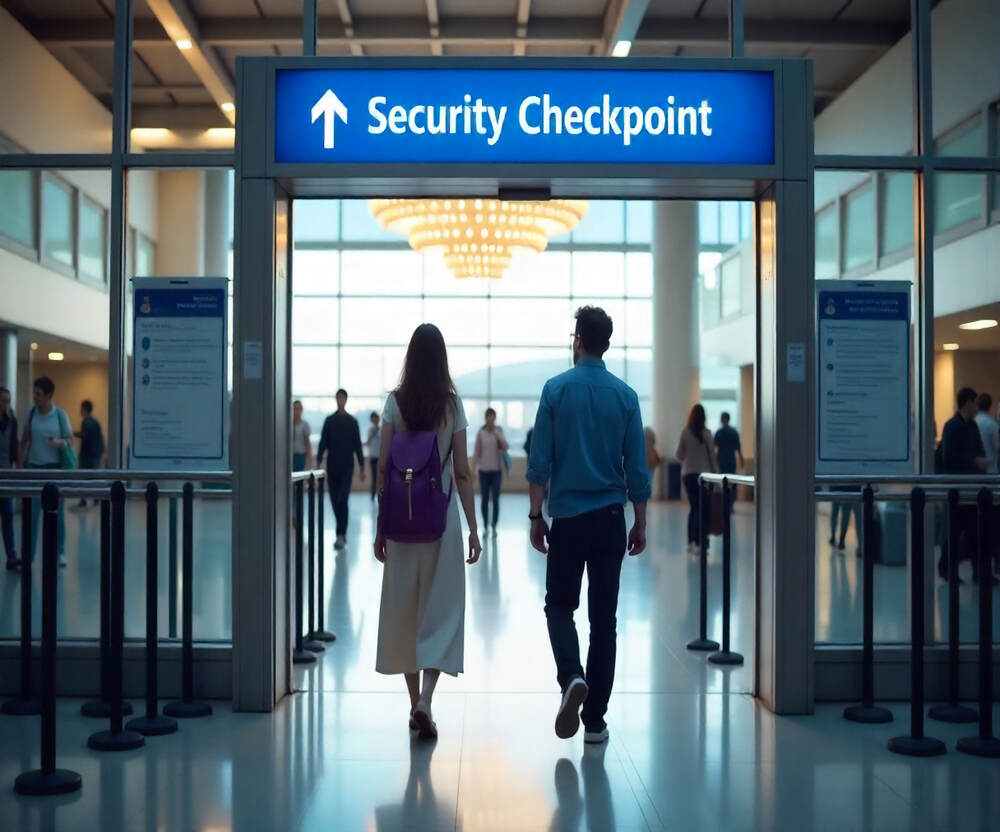≡-UK Holidaymakers Must Act Now to Navigate Airport Security Changes with CT Scanners: Key Rules for Liquids and Electronics You Need to Know – Viral of Today
<> Viral of Today <>
Home » TRAVEL NEWS » UK Holidaymakers Must Act Now to Navigate Airport Security Changes with CT Scanners: Key Rules for Liquids and Electronics You Need to Know Published on
August 29, 2025UK travellers should prepare without delay for the changing airport security environment, centred con new computed tomography (CT) scanning machines. These state-of-the-art devices permit passengers to retain larger amounts of liquids and personal electronic devices in their carry-on bags, thereby reducing congestion and accelerating processing times. Nevertheless, the rollout remains uneven; several airports have yet to implement the upgraded systems, compelling certain flyers to continue adhering to traditional requirements, which still mandate strict limitations on volume of liquid containers and the separate presentation of electronics for x-ray. Familiarity with the prevailing protocols at your departure airport, coupled with a revised packing approach, will minimise delay and enhance the efficiency of your passage through the security checkpoint.As summer travel season reaches its peak, UK holidaymakers are advised to take immediate action to navigate evolving airport security rules. The introduction of state-of-the-art CT (computed tomography) scanners at several UK airports has ushered in significant changes to how liquids and electronics are handled during security checks. While these advancements promise a faster, more convenient airport experience, they also create potential confusion for travellers who may find themselves in airports where the new system isn’t yet fully operational. Here’s everything you need to know to avoid mishaps and ensure a smooth, stress-free journey.The Shift to CT Scanners: What Does It Mean for UK Travelers?CT scanners have emerged as a game-changing technology in airport security. By combining X-ray technology with advanced computer imaging, these scanners allow airport security teams to see a 3D image of the contents inside your bag. This sophisticated technology has drastically improved security screening procedures and made travelling more convenient.One of the most significant benefits of the new CT scanners is that they eliminate the need for passengers to remove liquids, gels, and electronics from their hand luggage. Previously, passengers were required to separate liquids (limited to 100ml per container) and electronics like laptops and tablets, placing them in clear plastic bags or separate trays for screening. The introduction of CT scanners changes this process entirely.Thanks to the new scanners, passengers can now carry up to two litres of liquids per container in their hand luggage, with no limits on the number of bottles. Electronics can remain packed in the bag, further reducing the hassle of security checks. These changes are set to streamline airport procedures, ultimately reducing wait times and enhancing security.Which Airports Have Fully Implemented CT Scanners?Although the new CT scanners offer a significant upgrade to airport security, not all UK airports have fully rolled out the technology. Some airports are still operating under the old security rules, which means passengers will need to follow the standard 100ml liquid restriction and remove electronics from their bags for separate screening.As of now, airports like Edinburgh and Birmingham have fully embraced the new CT scanning technology, allowing passengers to bring larger quantities of liquids and keep their electronics in their carry-on luggage. These airports are ahead of the curve, making the travel experience more seamless and less time-consuming for holidaymakers.Airports Still Operating Under the Old RulesDespite the widespread adoption of CT scanners, there are still major airports in the UK that continue to enforce the traditional security measures. Passengers departing from airports like Heathrow, Stansted, and Manchester must still adhere to the old rules on liquids and electronics. This means liquids are restricted to containers of no more than 100ml, and these items must be placed in clear, resealable plastic bags. Additionally, electronics larger than A5 size (20cm x 20cm) will need to be removed from carry-on bags for separate screening.Travellers flying from these airports will need to allow extra time at security as the process may take longer due to the manual removal of liquids and electronics for inspection. With the introduction of CT scanners lane by lane, some passengers may find themselves stuck with the old rules while others breeze through with the new technology.Multi-Airport Travel and the Potential for ConfusionFor travellers who are flying out of one airport and then connecting to another or returning from a different airport, there is a significant risk of confusion. The variation in security procedures can lead to frustrating delays and unnecessary hassle.For instance, if you depart from an airport with CT scanners where you can bring liquids of up to two litres, only to return to an airport still operating under the old rules, you may find yourself having to dispose of excess liquid or delay your journey. This can be especially problematic for holidaymakers on multi-city trips who may be flying through airports with differing policies.It’s critical to check the specific security procedures for each airport you will be passing through and pack accordingly. This is especially important for travellers who are returning from abroad. Many European airports, including those in France, Spain, and Italy, still enforce the old rules requiring liquids to be placed in a clear plastic bag, which can cause confusion when flying back to the UK.How to Prepare for the Changing Security LandscapeTo ensure a smooth travel experience, UK holidaymakers must stay proactive in understanding the security procedures at each airport they will pass through. Here are several key tips for navigating airport security changes:1. Check Airport Websites for Updated Security InformationBefore heading to the airport, take a moment to visit the official airport websites for up-to-date information on security measures. Airports are updating their websites regularly to reflect the introduction of CT scanners, and checking this in advance will help you prepare for what to expect at security.2. Pack Liquids and Electronics Based on Departure AirportIf you’re travelling from an airport with CT scanners, take advantage of the relaxed rules by packing your liquids in larger quantities and leaving electronics in your bag. However, if you’re departing from an airport that still enforces the 100ml rule, make sure to adhere to the old regulations and pack your liquids in a clear, resealable plastic bag. When in doubt, it’s best to adhere to the most stringent regulations.3. Give Yourself Extra Time at Airports with the Old RulesIf you’re flying from an airport that hasn’t yet fully implemented CT scanners, be prepared for longer waits at security. Ensure you allocate sufficient time for the manual inspection of liquids and electronics. This is particularly important during busy travel periods, such as the summer holidays, when queues at security can be longer.4. Be Mindful of Return Flights and Multi-City TravelWhen returning to the UK from abroad, keep in mind that many international airports still adhere to the old rules. Make sure to check the security policies of your departure airport and pack accordingly, as you may need to remove liquids and electronics for screening.The Road Ahead: What’s Next for Airport Security?As more airports begin to adopt CT scanners, the security process will continue to improve, reducing wait times and increasing efficiency. The hope is that all major UK airports will eventually implement CT scanners, standardising security measures across the country. However, this transition may take time, particularly at larger airports where the installation of CT scanner technology can be costly and complex.The UK government and airports are investing heavily in these advancements, and as the technology becomes more widely available, it is expected that the process of flying will become increasingly streamlined. In the meantime, travellers must stay informed and be prepared for the differences in security protocols that exist across airports.UK holidaymakers must continue to monitor evolving airport security protocols, as the rollout of computed tomography (CT) scanners permits some travellers to carry liquids and devices without removal, while other airports maintain the longstanding restrictions. Early awareness of these operational discrepancies will minimise queuing and reduce stress on the day of travel.CT scanners, now appearing in a number of UK terminals, effectively modernise the security landscape, offering both an opportunity for expedited passage and a requirement for vigilant navigation of differentiated procedures. Airport websites provide the most current implementation status; by consulting them, deliberately organising hand luggage, and allotting additional minutes for screening, UK passengers can mitigate the risk of unforeseen delays. Proactive preparation, whether the trip is for leisure or a business engagement, remains the definitive means by which to foster a seamless and rewarding journey.
This information will surprise you!
See also
- Read until the end to discover everything.
- Important information you need to know.
- Interesting facts and helpful tips.
Conclusion
Did you enjoy the news? Keep following us daily!













